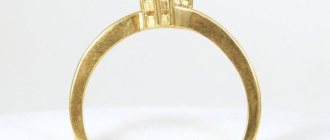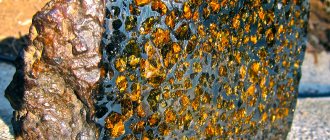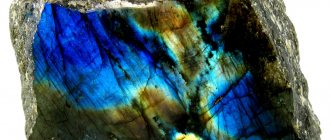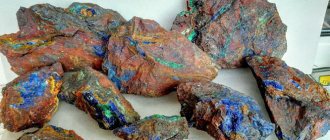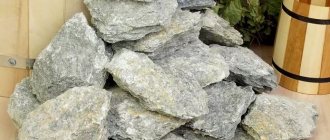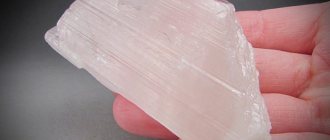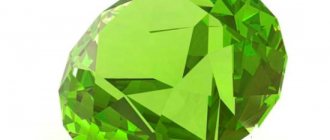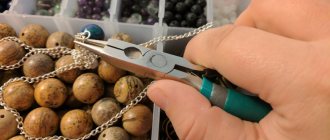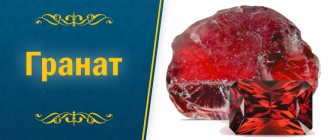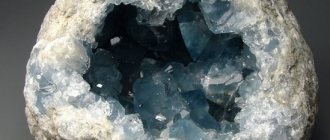Due to their high chemical inertness, they do not oxidize or corrode, thereby maintaining their characteristic shine and visual appeal.
Historically, precious metals have been used to make jewelry, and the high cost has placed gold and platinum in the same price range as precious stones.
In our age of high technology, precious metals are widely used in the production of products for the electronic, radio engineering and space industries, in the manufacture of laser technology and medical equipment, household appliances, computers and various gadgets.
Many parts included in hi-tech equipment contain precious metals in microscopic quantities.
Modern technologies for extracting this valuable material from secondary raw materials have turned the recycling of precious metals into a highly efficient production, surpassing in its profitability the extraction of gold, silver and platinum group elements from primary natural raw materials.
List of precious metals
The list of precious metals is presented in GOST R 52793-2007 “Precious metals. Terms and definitions" and legalized by the Federal Law of March 26, 1998. for No. 41-FZ “On Precious Metals and Precious Stones” (Article 1).
According to GOST R 52793-2007 (section 2), only 8 are considered precious metals, here is a list of them:
- gold;
- silver;
- platinum;
- palladium;
- iridium;
- rhodium;
- osmium;
- ruthenium.
As you can see, the list also includes silver, this will be interesting to know for those who are wondering whether silver is a precious metal.
Areas of use
By nature, gold and other precious metals are endowed with unique consumer qualities , for which gold products or silver crafts are so dear to their owners.
It’s not for nothing that the term “precious” is interpreted in two ways in Russian dictionaries - both “valuable, expensive” and “dear, dear, very necessary.”
Nowadays, the first place among the special properties of precious metals, which are absent in other materials, is their high resistance to the destructive influences of the environment in which they are used.
Therefore, already from the middle of the 19th century, platinum, gold, silver, iridium and other noble elements became the subject of industrial use .
Each material has its own specific technological niche, in accordance with which its certain market value has been established, taking into account the need for it and the complexity of its extraction from natural raw materials.
Below is a summary of the use of precious metals and approximate prices in rubles/gram:
- Gold is used for the manufacture of jewelry and dental prostheses, as a solder or welding material in the manufacture of thermocouples, as an electroplating coating for circuit boards, contacts, and connectors in the manufacture of products for all industries. With the development of nanotechnology, telecommunications, aerospace and nuclear energy, the scope of gold has expanded significantly. Gold is present in targets for nuclear research, used in special casings for neutron bombs, etc. The price of gold is set at 2570.98 rubles/gram.
- Silver is used in contacts of electrical products, in copper-silver solders, in various alloys, and is still used in photography. A large amount of silver is used for the manufacture of high-energy density batteries (silver-zinc and silver-cadmium) and as additives to lead for current leads of lead-acid batteries. Silver-coated mirrors are superior in reflective qualities to their aluminum-coated counterparts. The price of silver is set at 30.41 rubles/gram.
- Platinum still competes with gold in the production of jewelry, is indispensable for the manufacture of heat-resistant chemical laboratory glassware, and is popular in metallurgy as an alloying additive. Electroplating, heating elements, resistance thermometers, relay contacts - platinum is present everywhere. The cost of platinum is set at 1,756.73 rubles/gram.
- Rhodium is used for finishing jewelry, in the manufacture of thermocouples and neutron detectors for nuclear technology. Its heat-resistant properties are used in dies for glass filaments and thermocouples, and chemical inertness is taken into account in the production technology of nitric acid. The cost of rhodium is 5406.96 rubles/gram.
- Palladium, osmium, iridium and ruthenium are successfully used as catalysts for various technological processes in the chemical industry, in the manufacture of measuring sensors, for applying special coatings in products of the defense and space industries, and in telecommunication systems. Platinum group metals are indispensable for the manufacture of technological equipment operated in aggressive environments. Corrosion-resistant, heat-resistant alloys of ruthenium with iridium and platinum are materials for dies for fiberglass and viscose. Executive-class fountain pens are very popular, in which the writing “eternal” nibs, in accordance with their name, are soldered with osmium alloys with palladium and platinum.
For platinoids, as the noble elements of the platinum group are often called, the Central Bank of the Russian Federation has set the following prices:
- palladium – 2220.49 rubles/gram;
- osmium – 854.86 rubles/gram;
- iridium – 3120.22 rubles/gram;
- ruthenium – 559.93 rubles/gram.
You can read more about prices, as well as about methods of donating precious metals, be it metal refined from radio components or scrap jewelry, here.
Spheres and areas of use
The unique inimitable qualities of these substances have led to their use in a wide variety of industries and areas. Even the high cost of such materials did not prevent this.
Of course, the first thing precious raw materials are associated with is jewelry. Jewelry and other items made from such metals are in great demand, which is understandable. It is not only beautiful, but also profitable. Jewelry has always been an excellent investment.
No less famous is the use of noble materials as currency . However, in the modern world, coins made of such metals are an object of investment or collecting. In the field of investment, precious metals are invariably popular and in demand. This is especially true for gold.
In addition, these elements are widely used (for the manufacture of complete products, individual parts, and so on):
- in the production of various equipment and electronics, including microtechnology;
- in aviation and astronautics;
- in mechanical engineering (from various units to cars);
- in the production of radio equipment;
- in the chemical industry, including the laboratory sector (from glassware to equipment);
- in medicine;
- in the production of various protective coatings for absolutely any surface (from rockets and equipment to mirrors, pipes, ceramics, metals and wood);
- in the film and photographic industry;
- in the production of watches and watch movements.
Moreover, in medicine, noble metals are used not only for the manufacture of instruments and medical equipment, but also in the production of medicines . And this is not all - it is impossible to list all the areas and areas of application of precious materials.
Substances classified as noble play an extremely significant role. They are found every day in some form and are used in almost every industry. One can only guess what the life of mankind and the world around will become when the natural reserves of these metals run out.
Natural mining and production
The share of precious metals in the production volume of the global mining industry is only 0.00005%. The content of noble elements in the earth's crust is small; accordingly, the volumes of their extraction are not comparable with the development of other minerals. For example, less than 30 tons of rhodium are mined annually .
However, taking into account the high prices of gold, platinum and other precious metals, the cost of mined precious metals exceeds 5% of the value expression of the volume of production of all minerals.
That is, it is reasonable to estimate the cost of mining precious metals in a proportion that is 100 thousand times higher than the cost of mining any other natural raw material (except diamond).
The extraction of gold and other precious metals plays a special role in the state development system, since the available reserves of precious metals determine the strategic state of the gold and foreign exchange reserves of any country.
With the development of technologies for extracting precious metals from various types of raw materials in industrialized countries, three areas of production have emerged, each of which contributes to the replenishment of state gold and foreign exchange reserves:
- Primary mining associated with the extraction of precious metals from ore and the production of concentrated (enriched) materials, as well as the processing of industrial waste.
- Associated production associated with the extraction of precious metals from polymetallic ores mined for the production of non-ferrous metals.
- Recycling, which is the recovery of primarily gold, silver and platinum from scrap precious metals and waste.
In the Russian Federation, gold production indicators for 2014 were as follows :
- primary production – 232185 kg;
- associated production – 16880 kg;
- secondary production – 38913 kg.
Let's show similar indicators for silver for 2014:
- primary production – 510272 kg;
- associated production – 287978 kg;
- secondary production – 249139 kg.
There are several articles on the topic of independent mining of precious metals on our website:
- Search magnets for gold and silver.
- Metal detector for gold and silver mining.
- How to look for gold with a metal detector.
- We make a metal detector with our own hands.
From ore to ingot
Mining precious metals is a labor-intensive process. Gold reserves are decreasing, many are in hard-to-reach places, “under revision.” Companies mining precious metals are constantly improving their mining technology.
There are no easy deposits.
Let's go from a gold-bearing rock to a ring on a woman's finger.
Primary ore mining occurs in already explored deposits. Geologists spend time on expeditions, examine outcrops (rock outcrops), describe the collected samples, and observe whether there are any satellite minerals of noble metals. For silver, these are kerargyrite (silver hornblende), argentite, and proustite.
Before the revolution in the Urals, the “grandfathers-miners” were engaged in searching for gold veins. And they found veins.
The problem with Ural gold mining is water. Groundwater seeps through the walls, drips from the ceiling, and the floor is often flooded with water.
African and Indian gold mines suffer from the heat - it is above 40°C there.
Gold - to the surface
In places determined by geologists, pits are drilled, explosives are dropped into them and the rock is undermined. Then, using special equipment, the ore is delivered to the top and taken to the processing plant.
Extracting gold from ore
You look at the gold ore and pass by. She is not beautiful, she does not (usually) sparkle with gold. Let's start producing gold.
The content of precious metals in the ore dictates the method of processing.
There are several of them:
- Cyanidation.
- Heap leaching.
- Amalgamation.
- Hydrometallurgy.
We received a precious metal, not too pure. Go ahead.
Refining
To remove remaining impurities from gold, it is saturated with sulfur or chlorine. The essence of the process is to make gold liquid, then strain it, separate out impurities and convert it into a solid state.
We recommend: GOLD - a gift or curse to humanity
Casting
Where does the gold go now - in molds - cast iron molds, gold is poured into them. The metal hardens quickly, so it sparkles in the cradle mold. You've seen gold bars of this shape on TV.
Designations of precious metals
To designate chemical elements, natural substances and materials of artificial origin, special symbols are used in the form of conventional signs (symbols), codes or abbreviations that provide brief and visual information about the name of a chemical element or similar simple substance.
For noble metals
the following designations are accepted :
- gold - Au (from Latin Aurum);
- silver – Ag (from Latin Argentum);
- platinum – Pt (from Latin Platinum);
- palladium – Pd (from Latin Palladium);
- rhodium – Rh (from Latin Rhodium);
- ruthenium - Ru (from Latin Ruthenium);
- osmium - Os (from Latin Osmium);
- iridium - Ir (from Latin Iridium).
The symbolism of the symbols of precious metals is used for the following purposes :
- when marking jewelry;
- in metallurgy - in labeling information about the chemical composition of non-ferrous metal alloys in which precious metals are present as alloying additives (ligatures);
- when using precious metals as currency values, exchange commodities or other purposes in the financial market;
- when designating coin metals used in numismatics.
When designating precious metals in alloys, Cyrillic letters are used . For example, according to GOST 13498-2010 “Platinum and alloys based on it. Marks" the following designations of precious metals are accepted (clause 3.1):
- Pl – platinum;
- Pd – palladium;
- I – iridium;
- Rd – rhodium;
- Ru – ruthenium.
In particular, the PlRd 93-7 alloy contains platinum and rhodium.
Similarly for gold and silver in GOST 30649-99 “Alloys based on precious metals for jewelry. Brands" the corresponding designations Zl and Sr are adopted (clause 3.1).
For example, the ZlSrPd 585-255-160 alloy contains gold, silver and palladium.
History of discoveries
Gold and silver nuggets were discovered by mankind several thousand years ago, that is, before the advent of our era. The development of their natural deposits was successfully carried out on the territory of almost the entire globe back in ancient times.
Somewhat primitive devices and mining methods did not prevent ancient people from achieving their goals and penetrating into the bowels of the earth. The resulting gold and silver were melted down and processed. They were used to produce a wide variety of items. This is evidenced by historical information and various products made from these metals discovered during archaeological excavations of ancient burials.
Platinum "silver"
Unlike gold and silver, the third main noble element - platinum - was discovered by people only in the 16th century. Heavy white nuggets that did not melt well were found by Spanish colonizers as impurities in gold deposits in New Granada. Due to its external similarity to silver (plata in Spanish), the discoverers nicknamed the discovered metal the word platina, which literally means “little silver” in Spanish.
Before the discovery of the Spaniards, platinum, of course, existed and was even known to people. It was called white gold and was used to make counterfeit gold coins and jewelry. As a result of similar frauds that swept across the world, this metal was officially declared prohibited, as a result of which it began to be drowned in the depths of the sea.
In the 16th century, the Spaniards rediscovered the precious metal and rehabilitated it. But despite this, the first description of platinum from a scientific point of view was made only in the 18th century by the English scientist William Watson.
Other representatives of the group
The remaining representatives, the platinum group elements, were discovered one after another in the 19th century. They perfectly symbolize the era of scientific research and discovery.
Rhodium and palladium were obtained through chemical experiments by the Englishman William Hyde Wollaston in 1803. Exactly a year later, osmium and iridium were discovered in the same way, but by another English chemist - Smithson Tennant.
The history of the discovery of ruthenium is longer than that of its “relatives”. It was first extracted from platinum ore in 1808 by the prominent Polish scientist Andrzej Sniadecki. The scientist gave the resulting new chemical element the name Vestia.
Under this name, the metal existed until 1844, when a professor at the University of Kazan, Russian scientist Karl Klaus began a large-scale study of this element. After completing a comprehensive study, Klaus renamed the substance ruthenium - in honor of Great Rus'.
Product marking
In the production of technical products for various purposes and jewelry, precious metals are used exclusively in the form of alloys with other metals.
Precious metal alloys get their name from their main component (gold alloys, platinum alloys, etc.).
The main materials used for jewelry are gold, silver, platinum and palladium.
Other platinoids (rhodium, osmium, iridium and ruthenium) are added to precious metal alloys in order to adjust the physical and technical properties of the product being manufactured - color changes, ductility and hardness, heat resistance and melting point.
To identify products containing precious metals, markings are used (from German markieren - to put a mark, an iconic mark) with marking information applied in the following ways :
- using a mark (branding) directly on the surface of the product - for jewelry;
- entries in product passports, forms, labels, operating manuals, reference books and catalogs.
Purpose and methods of branding
According to the “Regulations on hallmarking and hallmarking of products made of precious metals...” (Decree of the President of the Russian Federation dated October 2, 1992 No. 1152), all jewelry and household products made from precious metals for sale must be branded with the state hallmark (clause 2 ).
The mark is applied only when the jewelry is made in accordance with all official canons and meets state quality standards.
The absence of a mark clearly indicates that it has not passed the inspection of the state inspection service, or was simply not presented to it and is being sold in circumvention of legal regulations.
Another marking on the product is the name tag, which is an imprint designating the manufacturer who manufactured the product.
The sale of jewelry made of precious metals without a name mark and inspection by the assay service is illegal .
At its core, hallmarking is an assay-technological operation of applying an hallmark to products made of precious metals. The method of its application is determined by the degree of complexity of the shape and purpose of the product on which the marking must be applied.
Currently, three branding methods are used:
- A mechanical or impact method of applying a mark, based on mechanical action on the surface of the jewelry (hitting a tool with a mark on the tip with a hammer after applying the mark to the surface of the product). Until now, about 80% of all products made from precious metals are branded in this way. Only the hammer has been replaced by automated stamping machines.
- Electroerosive or electro-spark method, which is essentially the burning of a mark with an electric spark. This branding technique is convenient for working with fragile hollow products. About 10-20% of all jewelry products are branded using the electrospark method.
- Laser method, in which the outline of the mark is applied with a laser. This mark is small in size, but has clear outlines. It is considered the only way to brand convex and concave hollow products.
How to read the mark?
The mark consists of two marks , which are either applied separately or presented together on one print:
- images of the sample mark;
- identification design - a five-pointed star with a hammer and sickle (for products produced before 1994) or a female head in a kokoshnik with a profile turned to the right for products of a later release, as shown in the table below.
The presence of an identification mark indicates that it has been assayed and stamped by the Assay Supervision Inspectorate.
The shape of the mark depends on the type of noble alloy. Below are sketches of hallmarks:
- pos. 1 – for gold items (in the form of a kind of spatula);
- pos. 2 – for silver alloys (barrel-shaped);
- pos. 3 – for products made of platinum (in the form of a polyhedron);
- pos. 4 – for products made of palladium (truncated cone with a semicircular base).
The contents of the hallmark indicate the following information (for example, the image of the hallmark of a 750-karat gold product is used and is indicated in red letters):
- pos. A – code of the supervision inspection;
- pos. B – identification mark;
- pos. B – test sign.
What is a sample?
Fineness is the quantitative content of pure precious metal in a jewelry alloy. The sample indicator is the mass of the noble metal expressed in grams , which is contained in 1 kg of the alloy.
The sample is assigned to any jewelry alloy.
For jewelry and household products made of precious metals in the Russian Federation in accordance with the Decree of the Government of the Russian Federation of June 18, 1999. The following samples were accepted for No. 643:
- for gold – 375, 500, 585, 750, 958 and 999;
- for silver – 800, 830, 875, 925, 960 and 999;
- for platinum – 850, 900 and 950;
- for palladium – 500 and 850.
Assay marks on jewelry are usually placed in the following places :
- for rings, use the inner side of the rim;
- for pendants, use the outer side of the ear;
- lock details are used on earrings, brooches and chains.
Types and properties of noble metals
Noble metals play an important role in a wide range of technologies. They correspond to the transition metal group of the periodic table. List of noble metals:
- Copper (Cu) is a fairly common and cheap non-ferrous metal that has excellent electrical and thermal conductivity. It is widely used in power lines, plumbing fixtures and household utensils. Medical uses of copper include use as antibiotics, antifungal and antimicrobial agents.
- Silver (Ag) has good electrical conductivity, chemical stability, catalytic activity and antimicrobial properties. Therefore, it is used to improve the microbial quality and characteristics of drinking water. The main sources of Ag are associated elements in the mining of copper, copper-nickel, Au, lead and lead-zinc ores mined in Russia, Canada, Mexico, Peru, Australia and the USA.
- Gold (Au) has exceptional chemical stability and good electrical conductivity and can be used for reliable contacts in high-precision devices. Historically, people's accumulation of gold indicated wealth. It is the most malleable of the precious metals and can therefore be worked with simple tools into complex shapes.
- Platinum (Pt) is less common than Cu, Au or Ag, but it holds a more honorable place in the history of precious metals. It is plastic and pliable, but denser and harder to process than silver and gold. It is very rare in nature. The metal is widely used in jewelry, instruments for laboratory use, and many valuable industrial products, including thermocouples and anticancer drugs. It is also used for electrical contacts, corrosion-resistant devices and in dentistry. Pt also gives its name to a distinct subset of elements known as the platinum group, which includes Ru, Rh, Pd, Os, Ir.
- Palladium (Pd), is a silvery-white metal and is often found in sediments with Pt, Ni and Cu. Pd is resistant to corrosion, and its alloys are used in jewelry as “white gold.” One of the distinguishing properties of Pd is its enormous ability to absorb hydrogen at a ratio of about 900:1 by volume, making it an excellent catalyst for hydrogenation and dehydrogenation reactions.
- Iridium (Ir) is a silvery-white metal that is highly resistant to corrosion and has a density of 22.55 g/cm3. It is found quite rarely in nature, and often with other precious metals. As a metal, it is non-functional, but has widespread use in space components and specialty spark plugs when alloyed with Pt.
- Osmium (Os) is part of the Pt group and is often found in its ores. Like Ir, it is also very rare and has a high density of 22.58 g/cm3 and a high melting point of 3000 C. Although Os is a non-workable metal, Os-Pt alloys are harder than Pt and are often used in specialty equipment. Its oxide OsO 4 is quite toxic to the human respiratory system.
- Ruthenium (Ru) occurs as a minor component of Pt ores and is chemically inert and silvery in color. Ru has an outer shell electronic configuration of [Kr] 4d7 5s1, making it more similar to Rh, Au and Pt. At a concentration level of less than 1%, Ru can improve the hardness of Pt and Pd alloys and the corrosion resistance of titanium (Ti). Found in superalloys operating at extremely high temperatures, such as jet engine turbines.
- Rhodium (Rh) is a hard, silvery transition metal that is resistant to corrosion and very inert. One of the rarest on Earth. Highly reflective and durable. As a bulk metal, it is mainly used. as an alloying agent for the hardness of Pt and Pd. Such alloys are used in furnace windings, thermocouple elements, and for making bushings in the production of fiberglass. The addition of Rh increases both the operating temperature and the mechanical properties of the material.
- Rhenium (Re) has a melting point exceeded only by tungsten W and carbon C. It is a dense metal with a white-silver tint. Re is more often mined together with Mo than with Pt. Although it is not a member of the platinum group, it has similar corrosion-resistant and high-temperature alloying properties. Re is more ductile at low temperatures and more stable at high temperatures, which also allows it to resist electron shock during X-ray generation and strengthen thermocouples at extreme temperatures.
The properties of noble metals are due to the fact that they usually crystallize in a face-centered cubic fcc structure, with the exception of Ru, Re and Os, which have a hexagonal close-packed hcp structure.
Current state of primary production
Gold mining occupies a priority position in the mining industry of any country.
A distinctive feature of modern primary mining of precious metals is the depletion of almost all known deposits .
For gold mining, industrial processing of ore from a primary deposit is recognized as profitable when extracting gold in the range of 1-5 g per ton of rock, and for placer mines the content of 0.1-0.5 g of gold grains per ton of processed sand is already welcomed and is considered beneficial for development.
quite large undeveloped gold deposits in Russia .
Against the backdrop of problems associated with the practical implementation of technologies for primary mining and processing of millions of tons of rock for the sake of just a few kilograms of gold or platinum, methods for processing metal-containing secondary raw materials are gaining popularity.
Scrap of precious metals and waste from the production of products containing noble metals are hundreds and thousands of times higher than natural sources in terms of the content of noble components in them. You can read about the cost of scrap precious metals in this article.
In many industrialized countries, recycling technologies return precious metals in quantities of up to 40% of the total volume of gold and other precious metals produced.
Despite the obvious stagnation of primary gold production, the level of its production, like other precious metals, is growing year after year. This is due to an increase in the volume of secondary production of precious metals.
Ore mining
Silver and gold have been known to people since ancient times. The reason is that precious metals are found in the form of nuggets, or more simply, pieces of pure metal.
We recommend: COPPER - the foundation of civilization
The extraction of these metals was carried out 4-5 thousand years ago, and they were mined in Asia, America, Europe, and Africa.
Behind the Golden Fleece
Those who have seen the film “The Argonauts” or read the myths of ancient Greece know about the voyage of the legendary heroes for the Golden Fleece. They sailed from Greece to distant Colchis (the same one in what is now Georgia). But we are wondering about the fleece - why it is golden. Fleece - lamb skin. Golden because there was golden sand on it.
There was such an ancient method of extracting gold, Strabo wrote about it in “Geography”:
“In their country (the territory of modern Georgia), as they say, mountain streams bring gold, and the barbarians catch it with sieves and shaggy skins. This is where, they say, the myth of the Golden Fleece arose.”
The skin was nailed to a plank tray and drowned in a river or stream that eroded the placer deposit. The sand got stuck in the wool, then the skin was dried, burned and gold bars were obtained.
Not verified: those who wish can still try to pan for gold in this way, as one (at least) tourist resource claims.
Sources of secondary raw materials
Sources of precious secondary raw materials can be:
- failed parts of industrial equipment, measuring equipment and control automation;
- waste from the production of radio electronics, television equipment, chemical industry, metallurgy, printing and other industrial sectors;
- jewelry production waste;
- scrap of precious metals.
Scrap of precious metals, considered as secondary raw materials, is represented by the following main groups of used products :
- For gold and silver scrap, the sources are used jewelry, thermocouples and temperature sensors, parts of household refrigerators, televisions, elements of office equipment (computers and printers), radio components, gadgets, telecommunications equipment, catalysts and catalytic grids, batteries, etc.
- For platinum group metal scrap, sources include jewelry made from various alloys of platinum and palladium, catalytic meshes and thermocouples, electrolysis equipment, laboratory glassware, crucibles and lids for them, other laboratory supplies, cases of glass melting equipment, dies, fragments of products coated with precious metals .
Content of precious metals in secondary raw materials
By its chemical composition, secondary raw materials of precious metals are complex multicomponent metallurgical raw materials.
As a rule, in addition to precious metals, scrap and waste contain alloys of iron, aluminum and copper, glass, glass ceramics, fiberglass, and polymers.
The content of precious metals in various objects and devices can only be determined after they have been processed in a refining organization capable of purifying gold, platinum, palladium and other metals to the highest standard.
The status of refining organizations is assigned to enterprises that carry out industrial purification (French affinage - purification, purification) of impurities of precious metals and bringing their quality to the requirements of the relevant standards.
to assess the quantitative content of gold, silver or other noble element in the “secondary” material prepared for processing on the basis of reference data that is available for each product or group of identical parts, or by a hallmark stamp on a piece of scrap jewelry.
For example, for a transistor of the KT 203 B series, the reference book indicates that it contains 0.0076 g of gold as gold plating on the terminals.
We offer you several articles on the topic of the content of precious metals in various products and their refining:
- Content of precious metals in radio components.
- Gold content in radio components.
- Contents in cars.
- Precious metals in household and office equipment.
- Refining of radio components.
- Refining of various items.
- Gold refining.
Not just decorations
Gold and silver are the main metals for jewelry. Platinum too, but that's for the elite. And the rest of the precious metals, are their unusual properties really not used - the inquisitive will ask.
Also how they are used. Here is a list of areas of application of precious metals:
- Electrical engineering. It is impossible to imagine it without noble metals. Highly reliable contacts, including metal-ceramic; Communication (well, who lives without a telephone now) is impossible without precious metals.
- Laboratory technology, chemical engineering . Containers (from tiny to real boilers) that can resist aggressive acids; Platinum or its alloys with other precious metals cover the surfaces of equipment in the pharmaceutical and food industries. Interesting: the boiler, of course, is difficult to steal, but in Soviet times, when using a crucible (cup) made of platinum in the laboratory, you had to sign in a special journal - when you took it, when you returned it. The dishes made of precious metals themselves were stored in safes.
- Medicine. Those who were treated with lapis, protargol, know that you were treated with silver preparations. There are diseases for which gold solutions are prescribed. Radioactive gold needles are used in the treatment of cancer.
- Protective coatings . Precious metals are used in the space industry. A very thin layer of gold is applied to the outer surface of the satellites (increasing reflectivity, protecting against corrosion).
- Some noble metals (silver, gold, platinum) work successfully as catalysts in the oil and chemical industries.
- Everyone has heard about gold and foreign exchange reserves. This is where the state’s “rainy day reserve” lies. This is mainly gold, silver is used in much smaller quantities.
- Coins made of precious metals have been known for a long time. Nowadays such coins are mainly of collector's or investment interest.
- Let's not forget about the jewelry industry. The pure shine of silver, the languid shimmer of gold - this is for us, our loved ones. It is a rare woman who can imagine herself without jewelry made of precious stones and metals. For your beloved (and very wealthy husband), you can buy a fountain pen as a gift, where the nib is made of an alloy of osmium, platinum and iridium.
We recommend: MANGANESE - the dream of steelworkers
There are many areas of use of precious metals. Don't consider them lazy aristocrats, incapable of anything serious.
Positive aspects of recycling
The main positive aspects of using the so-called “secondary” precious metals are the following circumstances :
- Unlike natural mineral raw materials used for primary mining and extraction of precious metals, secondary raw materials, represented by scrap gold, silver or platinum group metals, are much richer in the content of precious metals.
- Due to the increasing growth in the consumption of computer equipment, radio and television equipment, various gadgets, office equipment and household electrical appliances, the number of those that fail or are rejected during production or warranty service, which inherently serve as an endless source of precious metals in the form of recyclable materials, is correspondingly increasing. At the same time, the painful issue of recycling monitors, televisions, computers and other products that are subject to disposal in specialized organizations is being resolved.
- Precious metals recycling technologies do not require large production areas and have fewer technological stages compared to primary mining.
The gold content in secondary raw materials, depending on the type of scrap, can range from 1% to 50% by weight; for silver the figure is somewhat more modest - from 0.1% to 15%. This means that 100-200 kg or more of the precious metal can be extracted from 1 ton of gold scrap.
Gold.
The average gold content in the lithosphere is 4.3 10-7% by mass. The main methods include washing river sand (since gold is always found in native form, which is a consequence of high chemical resistance), as well as the extraction of gold ores in mines. The main gold-mining countries are: China – 12.8%, Australia – 9.4%, South Africa – 8.9%, USA – 8.9%, Russia – 7.9%, Peru – 7.7%, Uzbekistan – 6.3%. In 2010, 2652 million tons of gold were mined worldwide. And every year, global gold production is growing.
